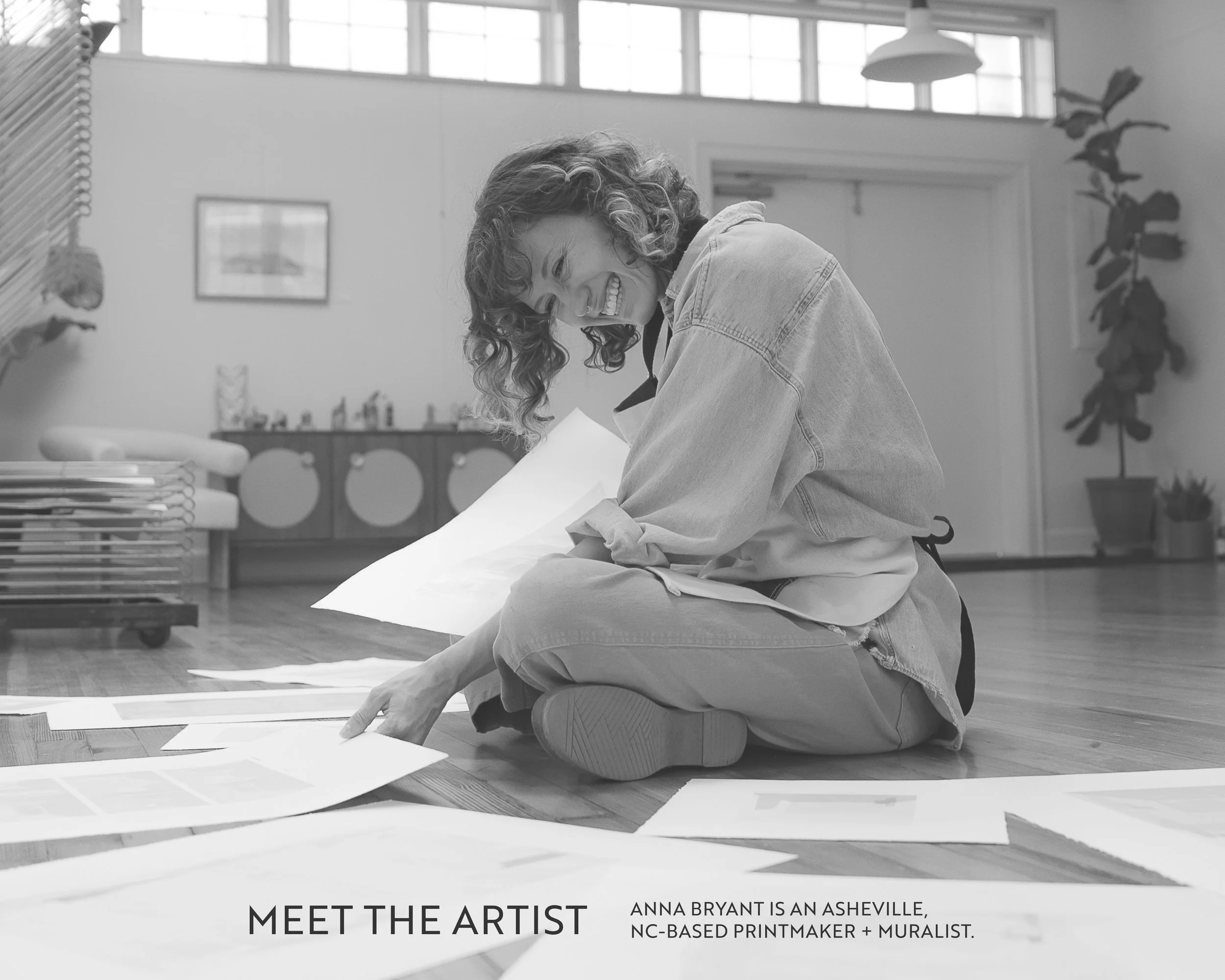
Over the years, I’ve explored a range of printmaking techniques, but I’m currently deeply focused on mono screen printing. I have a strong urge to remain analog in this increasingly digital world, embracing the tactile nature of print as both process and language. There’s a nostalgic and visceral connection between artist and medium that encourages engagement between viewer and piece—an experience that embodies a rare sense of permanence.
Rebuilding After hurricane helene
In September 2024, Hurricane Helene claimed the studio space I had been part of, gutting not only the equipment and infrastructure, but also the creative home and community we had built inside. In the months that followed, I partnered with the studio’s founder, Denise Markbreit, and together we worked tirelessly to rebuild. In May 2025, we opened the doors to Print House in downtown Asheville, NC, a new and reimagined home for printmaking in Western North Carolina.
most recent work
Echo of a Room That Was Never Real began during my residency at Vermont Studio Center in April 2025. This marked my first return to my studio practice after months without a dedicated workspace. Arriving with limited materials and no access to the equipment lost in the flood, I turned to mono screen printing—an intuitive, low-tech process that allowed me to create using what I had available.
Unlike traditional screen printing, mono screen printing doesn’t rely on exposed stencils or precise registration. Instead, I build color directly on the screen and pull it through in layers, allowing chance and imperfection to shape the work. This method is both physical and flexible—guided more by instinct than by plan—and quickly became a fitting way to explore the emotional terrain I was inhabiting.
Inspiration
This new body of work began quietly—just the way these rooms exist.
I didn’t fully know what I was making at first—only that I kept returning to the idea of a room: not any one room, but the sensation of being in a space that felt both remembered and invented. A space that was familiar but unplaceable.
I kept thinking about all the old buildings in the River Arts District that once housed our creative homes before Hurricane Helene claimed them—how many lives a single space can hold, the layers of history etched into their walls. I thought about all the people who came before, and what will come after; about the quiet pause in the life of a space, when it sits empty in the time after destruction and before what’s next. From this place of curiosity, the rooms in this series took shape. I built them not as literal recreations, but as emotional placeholders for transition and memory. I wondered who had been there before, who would come next, and what else these rooms could hold the weight of.
Giving the rooms a voice
This collection has been a process of listening—of slowing down enough to tune into ambiguity and let it guide the work. Something shifted in my practice while at residency: what began as daily journaling gradually turned into something closer to creative writing. For the first time, the writing was leading the visual direction.
As I built each image, the words kept arriving. While ink dried and screens were cleaned, paragraphs formed in the background of my mind. The writing felt insistent, like it wanted to be seen too. It only felt fair to give those thoughts a voice. That’s where the written piece accompanying this collection came from—not as a secondary explanation, but as part of the work itself. Both the prints and the writing hold the same atmosphere, speak in the same register. They belong to one another.
“These rooms exist somewhere between memory and invention, weathered interiors that refuse to settle into certainty. Each space is a holding place, a container for what came before and what might follow. They bear the quiet scars of past storms—windows that have watched generations come and gone, doors opened and closed too many times to count.
Maybe they’re only an echo of themselves, half-erased, half-rebuilt. A room waiting for someone to return—or for no one at all. Time feels suspended here. The air hums with silent uncertainty. Where is this room? What lies beyond it?
They’ve been emptied before. They’ll be filled again.
Each space carries the weight of history and the quiet dread of repetition—how rooms, like bodies, like nations, endure destruction, occupation, reclamation, loss. And still, they hold. They persist, even as their edges blur, surfaces dissolve, and light bends against the walls in unfamiliar ways. There is a dissonance in these rooms: between what is remembered and what is imagined, between shelter and abandonment, between ruin and repair.
We are all moving through a dream we did not choose, caught between doors that lead somewhere—or nowhere. These rooms ask: what remains after collapse? What invisible histories linger in the walls? How many times can a space be rebuilt?”
What’s next
I’m now imagining how far this work can go—exploring new ways to expand the series, deepen its conversation, and discover new mediums or applications that broaden its language.

